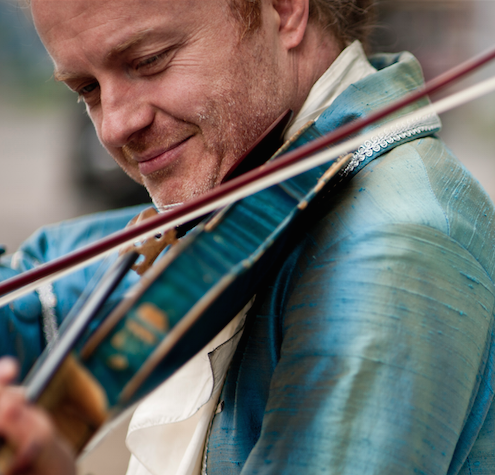MidAmerica Productions presents Pavel Šporcl with New England Symphonic Ensemble
Pavel Šporcl, Violin
New England Symphonic Ensemble; Maple Mountain High School Choirs
Giuseppe Lanzetta, David R. Thye, and Cory Mendenhall, conductors
Stern Auditorium at Carnegie Hall, New York, NY
February 13, 2016
On what was a marathon of a concert sponsored by MidAmerica Productions, the New England Symphonic Ensemble performed a brisk and polished account (aside from a few horn/wind entrances) of Beethoven’s Fidelio Overture and later gave grand presentations of Vivaldi’s choral work Gloria and John Rutter’s Magnificat. One also witnessed the unique violinist Pavel Šporcl performing two different styles of music.
Pavel Šporcl is a virtuoso of the first order. If you want to hear a violinist facing the utmost challenges of Paganini, he is the one. Mr. Šporcl has tremendous flair and an unbelievably impressive technique. These attributes are ideal for late-Romantic and modern works, along with more contemporary popular styles. According to his biography, he likes to go beyond classical music and work with non-classical artists. His gypsy band projects “Gypsy Way” and “Gypsy Fire” have been seen in many countries in nearly 300 concerts. Mr. Šporcl plays on a blue violin built at his request by Jan Spidlen in 2005.
On this particular occasion, Mr. Šporcl’s main presentation was Mendelssohn’s Violin Concerto in E minor, Op 64. Most memorable here was the remarkable technique and brilliance he exhibited in the last movement. It seems to me with an orchestra of this chamber size and the possibly little rehearsal time allotted, the well-known Mendelssohn was the practical choice. However, I very much look forward to hearing Mr. Šporcl play virtuosic, cutting-edge concertos by Prokofiev, Stravinsky, and Shostakovich, and with Mr. Šporcl’s Czech heritage in mind, I’m sure he would give an exquisite interpretation of Dvořák’s melancholy and ethnically zesty concerto. His gypsy and pop selections will interest audiences greatly. Mr. Šporcl’s blue violin is indeed a visceral stand-out. It does not possess the warmth of other violins I’ve heard in this hall–and this is a main reason Mendelssohn wouldn’t be my first choice for this artist. In the first two movements, some of his notes lacked a classically pure expression or vibrato, and had a raw sound one associates with 20th century or pop/rock repertoire. When tempos pushed, conductor Giuseppe Lanzetta didn’t always anticipate Mr. Šporcl’s thinking, and the orchestra was behind at times. In the third movement, however, Maestro Lanzetta was prepared for the rapidity of speed, and both soloist and orchestra were unified. The last movement had as fast a tempo as you’ll ever hear, but it was performed with precision nonetheless.
Mendelssohn’s blazing finale perfectly segued to Mr. Šporcl’s encore, the Paganini Caprice No. 5. In addition to the audience, many orchestra members were studying Mr. Šporcl’s performance with awe. Thanks to a few persistent concert-goers, we actually got to hear this Paganini showpiece, as the bulk of the audience–not knowing the traditions of classical concerts–ceased clapping before Mr. Šporcl’s return to the stage. It was with the Paganini that Mr. Šporcl’s strengths worked the best: excellent intonation, a brilliant technique and bow-arm, a colorful sound with wide-ranging variety, and a flashy, tireless energy. It was already recording-ready (hopefully it was recorded–microphones were present). He is a unique artist that should get a lot more visibility on New York’s contemporary arts scene.

